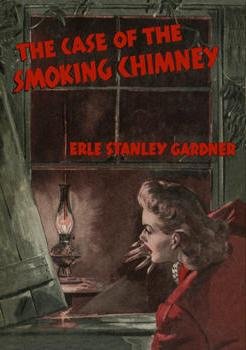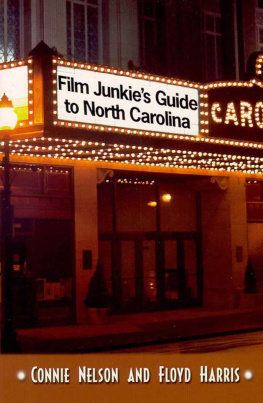
DAN DURYEA
HOLLYWOOD LEGENDS SERIES
CARL ROLLYSON, GENERAL EDITOR

DAN DURYEA
HEEL WITH A HEART
MIKE PEROS

University Press of Mississippi Jackson
www.upress.state.ms.us
Designed by Peter D. Halverson
The University Press of Mississippi is a member of the Association of American University Presses.
Copyright 2016 by University Press of Mississippi
All rights reserved
Manufactured in the United States of America
First printing 2016
Library of Congress Cataloging-in-Publication Data
Names: Peros, Mike.
Title: Dan Duryea : heel with a heart / Mike Peros.
Description: Jackson : University Press of Mississippi, 2016. | Series: Hollywood legends series | Includes bibliographical references and index.
Identifiers: LCCN 2016014275 (print) | LCCN 2016024278 (ebook) | ISBN 9781628462326 (hardcover : alk. paper) | ISBN 9781496809933 (epub single) | ISBN 9781496809940 (epub institutional) | ISBN 9781496809957 (pdf single) | ISBN 9781496809964 (pdf institutional)
Subjects: LCSH: Duryea, Dan, 19071968. | ActorsUnited StatesBiography.
Classification: LCC PN2287.D875 P48 2016 (print) | LCC PN2287.D875 (ebook) | DDC 791.4302/8092 [B] dc23
LC record available at https://lccn.loc.gov/2016014275
British Library Cataloging-in-Publication Data available
For Barbara
CONTENTS
DAN DURYEA
CHAPTER 1
A Duryea Overview
LATE IN HIS LIFE, DAN DURYEA MADE A RESERVATION AT A WILSHIRE Boulevard restaurant called the Egg and the Eye. He was expecting a telephone call from his wife, Helen, and informed the pretty girl at the reservation desk. Look, she warned, dont be mad if I mix up wives a little. Today we have reservations for Dan Duryea, Dan Dailey, and Bill Daily. Duryea loved it. It gave him his story for that week. This anecdote reveals a lot, not only about Duryeas sense of humor, much of it selfeffacing and occasionally self-deprecating, but also about how Duryea tends to be either forgotten or confused with somebody else. When I would tell people I was working on the first biography of Dan Duryea, the initial response would be Dan Dailey? After I mentioned The Little Foxes and perhaps Scarlet Street, Id finally get the smile of recognition that I was seeking.
Whenever I look at Dan Duryeas body of work, one question comes to mind: why hasnt there been one single major literary effort that has addressed the entirety and variety of his career? A comprehensive look at Dan Duryeas films and television career (not to mention his radio and theater work) is akin to taking a journey through a largely undiscovered country, and one that is long overdue. This biography seeks to correct this grievous oversight. Dan Duryea is probably best known for the slimy, scheming villains that he compellingly portrayed in films throughout the 1940s, 50s, and into the 60s. Consider the three films that comprise his cinematic partnership with Fritz Lang. Ministry of Fear casts Duryea as a tailor with a very menacing pair of shears; his appearances are fleeting throughout but his very presence heightens the danger for beleaguered hero Ray Milland, as well as the audience. In The Woman in the Window, he insolently swaggers into kept woman Joan Bennetts apartment after she and Edward G. Robinson believe (mistakenly) that theyve managed to remove all traces of what had been a killing in self-defense. As the victims presumed bodyguard, Duryea challenges Bennett to call the police, and later threatens to blackmail the hapless coupleeven as hes putting the make on Bennett (money is money, but Duryeas characters also hold out for the promise of sexual satisfaction). When Lang and his three stars reunited the following year for Scarlet Street, many critics commented that it was just a redo of Woman in the Window. It is in fact a far darker film than its predecessor, as Duryea is joined by Bennett as predators par excellence who fully deserve each other as they lead the hapless Robinson inexorably to a special dance of death (and one which wreaked havoc on the Production Code).
Film noir is the ideal genre for Duryeas patented blend of menace, sleaze, confidence, and superficial charm that leads his characters to believe theyre Gods gift to women. 1949s Criss Cross pits Duryeas silky smooth Slim Dundee against working-class, blinded-by-love Burt Lancasters Steve for the prize of a satchel of cash and the alluring Yvonne De Carlo. Lancaster and De Carlo turned a lot of filmgoers heads in the 1940s, but when Duryea is on the screen, all eyes are on him. One Way Street is one-third of a good filmat least the third that Duryea appears in as a big-time crook thwarted by his physician James Mason. Yes, Doc Mason takes Duryeas moneybut when he makes off with Duryeas woman (Marta Toren), there will be hell to pay. 1949s Manhandled presents Duryea as an ex-cop-turned-sleazy-private-eye who nevertheless ingratiates himself into nave Dorothy Lamours life and improvises a scheme to steal some valuable jewels. While not a great movie, Duryea is in rare form as a conniving, confident chiseler, especially in contrast to the rather desultory leads (including Sterling Hayden).
Westerns also provide a scenic backdrop to Duryeas villainy. Along Came Jones is a comic Western in which Gary Cooper is mistaken for notorious outlaw Dan Duryea, and while Coop is his usual lanky, diffident self, its Duryea who provides some much-needed punch to the proceedings. In Winchester 73, Duryea makes a late entry as Waco Johnny Dean, but once in, the screen is his. Yes, James Stewart is looking for the villain who stole his prized Winchester, but when Waco enters, needling, smiling, and shooting, he almost swipes the gun and the film from a marvelously obsessed Stewart. Allan Dwans Silver Lode presents Duryea as Marshal McCarty, an obsessive lawman who rides into town with a warrant for well-liked John Payne, in what was interpreted as a Western allegory about the Hollywood witch-hunts of the 1950s.
Yet Duryeas impeccably portrayed villainy in films that have generally grown in stature over the years doesnt begin to prepare one for the variety and shadings in his characterizations. This ability could be detected early on with his official film debut, recreating his stage role as the transparent, good-for-nothing Leo in The Little Foxes; as comic gangster Pastrami in Ball of Fire; as sportswriter Walter Brennans naysaying but likable sidekick in Pride of the Yankees; as the enterprising, foreverwagering radioman for Humphrey Bogarts cut-off tank unit in Sahara. All these well-etched supporting characters were of inestimable service to films which later became classics.
This versatility would manifest itself throughout Duryeas career, much of which was spent at Universal but would eventually include a freelance option, which Duryea took full advantage of. By the time of 1946s Black Angel, Duryea had already completed his Lang trifecta, but in Roy William Neills initially underrated noir, he is low-key and moving as an alcoholic pianist carrying a torch for his murdered wife, while trying to help the young heroine solve that murder. 1950s The Underworld Story uses Duryeas established persona as a heel to keep his costars and the audience guessing in this powerful, unsung drama of a disgraced news reporter who moves to a small town and quickly latches onto a sensational case involving murder, corruption, and racial prejudice. Its a pretty daring film for its time, and Duryea is superb in it. The little-known
Next page











